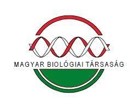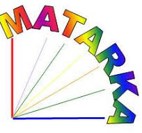Természetvédők és kutatók ismeretei az eurázsiai hód kapcsán a Kárpát-medencében II.: táplálkozás, építés, élőhelyválasztás, ismeretterjesztés
Absztrakt
Természetvédelmi szakemberek és kutatók eurázsiai hóddal kapcsolatos tudásanyagát vizsgáltuk interjúk segítségével. Tanulmányunk első részében a hód elterjedésével, életnyomaival, az együttélés lehetőségeivel és az elhullás okaival foglalkoztunk (Juhász et al. 2019). A második részben a hód életmódjával, valamint az ismeretterjesztéssel és a helyi lakosok adatközlők által érzékelt tudáshiányával kapcsolatos kérdésekre kapott válaszokat mutatjuk be. Az adatközlők 26 nemzetség fásszárú fajainak hasznosítását, 19 lágyszárú taxon fogyasztását és 15 lágyszárú taxon hódgátba, hódvárba való beépítését figyelték meg. Segítségükkel részletes információkat gyűjtöttünk a faj gátépítési, várépítési és élőhelyválasztási szokásainak élőhelyi adottságokkal való összefüggéseiről. Ezen információk jól kiegészíthetik a terepi felmérések eredményét, valamint segíthetik egyes jelenségek jobb megismerését és újabb terepi kutatások megalapozását. A helyi emberek tudásanyaga kapcsán az adatközlők által érzékelt hiányosságok rávilágítanak arra, hogy hóddal kapcsolatos ismereteket is érdemes a vizes élőhelyekről szóló általános ismeretterjesztésbe belefoglalni.
Hivatkozások
Allen, A. W. (1982): Habitat suitability index models: Beaver. – US Department of the Interior, Fish and Wildlife Service Biological Report 82 (10.30 Revised), Washington, 20 p.
Babai D., Ulicsni V., Biró M., Juhász E. & Molnár Zs. (2019): „Az emberek nem tudják miféle. Még emlékezet se volt róluk!” Természetismeret-szerzési mechanizmusok egy visszatelepített ökoszisztéma-mérnök faj (eurázsiai hód – Castor fiber) kapcsán. – Ethno-Lore. 36: 227–244.
Bajomi, B. (2011): Az eurázsiai hód (Castor fiber) visszatelepítésének tapasztalatai Magyarországon. – WWF Magyarország, Budapest, 54 p.
Bozsér O. (2000) A jót választani kell – Hódok Gemencen. – Élet és Tudomány 12: 368–370.
Bozsér, O. (2001): Hódok az óvilágban. – WWF Magyarország, Budapest, 28 p.
Bozsér, O. (2002): Hódélőhely alkalmassági felmérés a Közép-Tiszai Tájvédelmi Körzetben. – WWF Magyarország, Budapest, 13 p.
Buzetzky, Gy. & Juhász, E. (2019): Eurázsiai hódok (Castor fiber) a Dráva Baranya megyei szakaszán. – Kutatási jelentés. Duna-Dráva Nemzeti Park Igazgatóság, 6 p.
Campbell-Palmer, R., Schwab, G., Girling, S., Lisle, S. & Gow, D. (2015): Managing wild Eurasian beavers: a review of European management practices with consideration for Scottish application. – Scottish Natural Heritage Commissioned Report No. 812. Scottish Natural Heritage, Inverness, United Kingdom, 51 p.
Czabán, D. (2003): A Hanságba visszatelepített hódok (Castor fiber) élőhely- és táplálékválasztási szokásai. – MSc diplomadolgozat, Eötvös Loránd Tudományegyetem, Budapest, 71 p.
Czabán, D. (2013): Éljünk együtt a hódokkal, de hogyan? – WWF Magyarország, Budapest, 41 p.
Czabán, D. (2016): Hódok a Szigetközben. – In: Korda, M. (szerk.): Az erdőgazdálkodás hatása az erdők biológiai sokféleségére. Tanulmánygyűjtemény. Duna-Ipoly Nemzeti Park Igazgatóság, Budapest, pp. 403–418.
Czabán, D. (2017): A hód állományának vizsgálata az FHNP működési területén. – Kutatási jelentés. Fertő–Hanság Nemzeti Park Igazgatóság, Sarród, Kézirat, 45 p.
Czabán, D. & Gruber, T. (2018): Visszatértek a hódok – áldás vagy átok? – Termvéd Közlem. 24: 67–74. https://doi.org/10.20332/tvk-jnatconserv.2018.24.67
Danilov P. I. & Kanshiev V. Y. (1983): The state of populations and ecological characteristics of European (Castor fiber L.) and Canadian (Castor canadensis Kuhl.) beavers in the north-western USSR. – Acta Zool. Fenn. 174: 95–97.
Danilov, P. I. & Fyodorov, F. V. (2015): Comparative characterization of the building activity of Canadian and European beavers in northern European Russia. – Russ. J. Ecol. 46: 272–278. https://doi.org/10.1134/S1067413615030029
Dzięciołowski, R. & Misiukiewicz, W. (2002): Winter food caches of beavers (Castor fiber) in NE Poland. – Acta Theriol. 47: 471-478. https://doi.org/10.1007/BF03192471
Enck, J. W., Bishop, P. G., Brown, T. L. & Lamendola, J. E. (1992): Beaver-related Attitides, Experiences, and Knowledge of Stakeholders in Wildlife Management Unit 21., 74 p.
Espinosa, S. & Jacobson, S. K. (2012): Human-wildlife conflict and environmental education: Evaluating a community program to protect the Andean bear in Ecuador. – J. Environ. Educ. 43: 55–65. https://doi.org/10.1080/00958964.2011.579642
Fustec, J., Lodé, T., Le Jacques, D. & Cormier, J. P. (2001): Colonization, riparian habitat selection and home range size in a reintroduced population of European beavers in the Loire. – Freshw. Biol. 46: 1361–1371. https://doi.org/10.1046/j.1365-2427.2001.00756.x
Fustec, J., Cormier, J. P. & Lodé, T. (2003): Beaver lodge location on the upstream Loire River. – Comptes rendus biologies 326: 192-199. https://doi.org/10.1016/S1631-0691(03)00057-X
Fustec, J. & Cormier, J. P. (2007): Utilisation of woody plants for lodge construction by European beaver (Castor fiber) in the Loire valley, France. – Mammalia 2007: 11–15. https://doi.org/10.1046/10.1515/MAMM.2007.002
Guimbo, I. D., Mueller, J. G. & Larwanou, M. (2011): Ethnobotanical knowledge of men, women and children in rural Niger: a mixed-methods approach. – Ethnobot. Res. Appl. 9: 235–242.
Gorczyca, E., Krzemień, K., Sobucki, M. & Jarzyna, K. (2018). Can beaver impact promote river renaturalization? The example of the Raba River, southern Poland. – Sci. Total Environ. 615: 1048–1060. https://doi.org/10.1016/j.scitotenv.2017.09.245
Gore, M. L. & Knuth, B. A. (2009): Mass media effect on the operating environment of a wildlife related risk-communication campaign. – J. Wildl. Manage. 73(8): 1407–1413. https://doi.org/10.2193/2008-343
Haarberg-Bozsér, O. (2005): Hódélőhely alkalmassági felmérés az Alsó-Tisza-vidékén. – WWF Magyarország, Budapest, 13 p.
Haarberg, O. & Rosell, F. (2006): Selective foraging on woody plant species by the Eurasian beaver (Castor fiber) in Telemark, Norway. – J. Zool. 270: 201–208. doi: http://doi.org/10.1111/j.1469-7998.2006.00142.x
Haarberg, O. (2007): Amit a hódról tudni érdemes. – WWF füzetek 26. WWF Magyarország, Budapest, 30 p.
Hartel, T., Fischer, J., Câmpeanu, C., Milcu, A. I., Hanspach J. & Fazey, I. (2014): The importance of ecosystem services for rural inhabitants in a changing cultural landscape in Romania. – Ecol. Soc. 19: https://doi.org/10.5751/ES-06333-190242
Hartman, G. & Törnlöv, S. (2006): Influence of watercourse depth and width on dam-building behaviour by Eurasian beaver (Castor fiber). – J. Zool. 268: 127–131. https://doi.org/10.1111/j.1469-7998.2005.00025.x
Jemison, M. (2017): Communication considerations for one health: the influence of media framing on representations of a human-bat disease conflict in the Australian print media. – Aust. Zool. 38: 505–517. https://doi.org/10.7882/AZ.2017.002
Jenkins, S. H. (1980): A size distance relation in food selection by beavers. – Ecology, 61: 740-746. Jones, K., Gilvear, D., Willby, N. & Gaywood, M. (2009): Willow (Salix spp.) and aspen (Populus tremula) regrowth after felling by the Eurasian beaver (Castor fiber): implications for riparian woodland conservation in Scotland. – Aquat. Conserv. 19: 75. http://doi.org/10.1002/aqc.981
John, F. & Kostkan, V. (2009): Compositional analysis and GPS/GIS for study of habitat selection by the European beaver, Castor fiber in the middle reaches of the Morava River. – Folia Zool. 58: 76–86.
John, F., Baker, S. & Kostkan, V. (2010): Habitat selection of an expanding beaver (Castor fiber) population in central and upper Morava River basin. – Eur. J. Wildl. Res. 56: 663–671. https://doi.org/10.1007/s10344-009-0361-5
Johnston C. A. & Naiman R. J. (1990) Browse selection by beaver: effects on riparian forest composition. – Can. J. For. Res. 20: 1036–1043. https://doi.org/10.1139/x90-138
Juhász, E. (2017): Az eurázsiai hód (Castor fiber) táplálék-preferenciájának és területhasználatának vizsgálata. – OTDK dolgozat, Szegedi Tudományegyetem, 39 p.
Juhász, E., Babai, D., Biró, M., Molnár, Zs. & Ulicsni, V. (2017): Az eurázsiai hód (Castor fiber) táplálkozási és fásszárú-használati szokásaival kapcsolatos helyi tudás két évtizeddel a visszatelepítések kezdete után a Kárpát-medencében. – Termvéd. Közlem. 23: 182–200. https://doi.org/10.20332/tvk-jnatconserv.2017.23.182
Juhász, E. (2018): Az eurázsiai hód (Castor fiber Linnaeus, 1758) elterjedése és tevékenysége a Dél-Alföldön – Állattani Közlem. 103: 15–32. https://doi.org/10.20331/AllKoz.2018.103.1-2.15
Juhász E., Biró M., Ulicsni V. & Molnár Zs. (2019): Természetvédők és kutatók ismeretei az eurázsiai hód kapcsán a Kárpát-medencében I.: elterjedés, életnyomok, az együttélés lehetőségei, az elhullás okai. – Termvéd Közlem. 25: 59–79. https://doi.org/10.20332/tvk-jnatconserv.2019.25.59
Karjalainen, T. P. & Habeck, J. O. (2004): When’the environment’comes to visit: local environmental knowledge in the far north of Russia. – Environ. Values 2004: 167-186.
Krojerová-Prokešová, J., Barančeková, M., Hamšíková, L. & Vorel, A. (2010): Feeding habits of reintroduced Eurasian beaver: spatial and seasonal variation in the use of food resources. – J. Zool. 281: 183–193. https://doi.org/10.1111/j.1469-7998.2010.00695.x
Law, A., Jones, K. C. & Willby, N. J. (2014): Medium vs. short-term effects of herbivory by Eurasian beaver on aquatic vegetation. – Aquat. Bot. 116: 27–34. http://doi.org/10.1016/j.aquabot.2014.01.004
Law, A., Gaywood, M. J., Jones, K. C., Ramsay, P. & Willby, N. J. (2017): Using ecosystem engineers as tools in habitat restoration and rewilding: beaver and wetlands. – Sci. Total Environ. 605: 1021–1030. https://doi.org/10.1016/j.scitotenv.2017.06.173
Macdonald, D. W., Tattersall, F. H., Rushton, S., South, A. B., Rao, S., Maitland, P. & Strachan, R. (2000): Reintroducing the beaver (Castor fiber) to Scotland: a protocol for identifying and assessing suitable release sites. – Animal Conservation forum 3: 125–133. https://doi.org/10.1111/j.1469-1795.2000.tb00237.x
Mátrai, B. (2019): Az eurázsiai hód (Castor fiber) táplálkozásának vizsgálata Budapesten. – Szakdolgozat, Szent István Egyetem, 37 p.
McKinstry, M. C. & Anderson, S. H. (1999): Attitudes of private-and public-land managers in Wyoming, USA, toward beaver. – Environ. Manage. 23: 95–101. https://doi.org/10.1007/s002679900170
Müller-Schwarze, D. (2011). The beaver: its life and impact. – Cornell University Press, 216 p.
Naiman, R. J., Melillo J. M. & Hobbie J. E. (1986): Ecosystem alteration of boreal forest streams by beaver (Castor canadensis). – Ecology 67: 1254–1269. https://doi.org/10.2307/1938681
Newing, H. (2010). Conducting research in conservation: social science methods and practice. – Routledge, London and New York, 376 p.
Nolet, B. A., Hoekstra, A. & Ottenheim, M. M. (1994): Selective foraging on woody species by the beaver Castor fiber, and its impact on a riparian willow forest. – Biol. Conserv. 70: 117–128. http://doi.org/10.1016/0006-3207(94)90279-8
Payne, N. F. & Peterson, R. P. (1986): Trends in complaints of beaver damage in Wisconsin. – Wildl. Soc. Bull. (1973-2006), 14: 303–307.
Právics, M. (2012): Az eurázsiai hód (Castor fiber) állományának és táplálkozásának vizsgálata a Kerka mentén. – Szakdolgozat, Nyugat-Magyarországi Egyetem, 72 p.
Reyes-García, V., Broesch, J., Calvet-Mir, L., Fuentes-Peláez, N., McDade, T. W., Parsa, S., Tanner, S. Huenca, T., Leonard, W.R., Martínez-Rodríguez, M. R. & TAPS Bolivian Study Team (2009): Cultural transmission of ethnobotanical knowledge and skills: an empirical analysis from an Amerindian society. – Evol. Hum. Behav. 30: 274–285. https://doi.org/10.1016/j.evolhumbehav.2009.02.001
Rosell, F., Bozser, O., Collen, P. & Parker, H. (2005): Ecological impact of beavers Castor fiber and Castor canadensis and their ability to modify ecosystems. – Mammal rev, 35: 248–276.
Santo, A. R., Guillozet, K., Sorice, M. G., Baird, T. D., Gray, S., Donlan, C. J. & Anderson, C. B. (2017): Examining private landowners’ knowledge systems for an invasive species. – Hum. Ecol., 45: 449–462. https://doi.org/10.1007/s10745-017-9920-7
Tallósi, B. (2013): A betelepített hódpopulációra vonatokozó megfigyelési adatok és a faj természetvédelmi helyzete a Hortobágyi Nemzeti Park Igazgatóság Közép-Tisza-Jászság Természetvédelmi Tájegységének területén 2012 decembere és 2013 márciusa között. – Kézirat, WWF Magyarország, Budapest, 28 p.
Ulicsni, V., Babai, D., Vadász, Cs., Vadász-Besnyői, V., Báldi, A. & Molnár, Zs. (2019): Bridging conservation science and traditional knowledge of wild animals: The need for expert guidance and inclusion of local knowledge holders. – Ambio, 48: 769–778. https://doi.org/10.1007/s13280-018-1106-z
Ulicsni. V., Babai, D., Juhász, E., Molnár, Zs. & Biró, M. (2020): Local knowledge about a newly reintroduced, rapidly spreading species (Eurasian beaver) and perception of its impact on ecosystem services. – Plos One, 15: e0233506. https://doi.org/10.1371/journal.pone.0233506
Valachovič, D. (2014): Manual of beaver management within Danube River basin. Danube Parks, 76 p.
Varju, J. & Jánoska, F. (2015): Az eurázsiai hód (Castor fiber Linnaeus, 1758) fás szárú táplálékpreferenciája és élőhelyhasználata a Mosoni-Dunán. – Erdészettudományi Közlem. 5: 129–144. https://doi.org/10.17164/EK.2015.009
Vorel, A., Válková, L., Hamšíková, L., Maloň, J. & Korbelová, J. (2015): Beaver foraging behaviour: Seasonal foraging specialization by a choosy generalist herbivore. – Behav. Ecol. Sociobiol. 69: 1221–1235. https://doi.org/10.1007/s00265-015-1936-7
Vorel, A., Dostál, T., Uhlíková, J., Korbelová, J. & Koudelka, P. (2016): Handbook for Coexisting with beavers. – Czech University of Life Sciences, Prague, 136 p.
Westbrook, C. J., Cooper, D. J. & Baker, B. W. (2011): Beaver assisted river valley formation. – River Res Appl. 27: 247–256. https://doi.org/10.1002/rra.1359
Wright J. P., Jones C. G. & Flecker A. S. (2002): An ecosystem engineer, the beaver, increases species richness at the landscape scale. – Oecologia 132: 96–101. http://doi.org/10.1007/s00442-002-0929-1
Zarger, R. K. (2002): Acquisition and Transmission of Subsistence Knowledge by Q’eqchi’ Maya in Belize. – In: Stepp J. R., Wyndham F. S. & Zarger R. K. (eds.): Ethnobiology and Biocultural Diversity. University of Georgia Press, Athens, GA., pp. 592–603.
Zent, S. (2013): Processual perspectives on traditional environmental knowledge. – In: Ellen R., Lycett S. J. & Johns S. E. (eds.): Understanding Cultural Transmission in Anthropology: A Critical Synthesis. Berghahn Books, New York and Oxford pp. 213–265.
http1: http://magyarnemzetiparkok.hu/ Utolsó letöltés időpontja: 2020. április 3.






